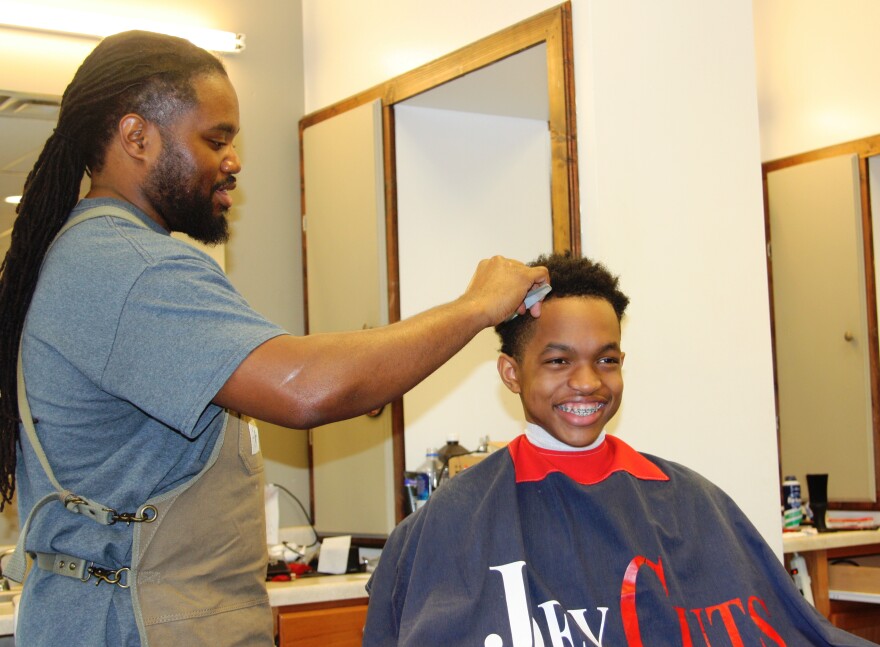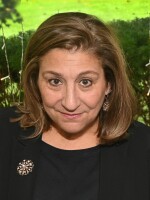If you look at the travel brochures about Kansas City, or talk to the Kansas City Convention and Visitors Association, the historic18th and Vine Jazz District is always listed among the top destinations.
People come from all over the world in search of that distinctive Kansas City sound.
But a perennial criticism: there's not enough in the district to keep people coming back. People aren't hanging out at 18th and Vine like they do on the Country Club Plaza or The Power & Light District.
As the city considers how to spend a proposed $18 million, we're going to be spending some time at 18th and Vine — talking about the past, present and future of the iconic district.
Making a home for dance in the district
I went down to get a sense of what's happening in the district today. My first stop was The Kansas City Friends of Alvin Ailey. It's been at 18th and Woodland — the east edge of the district — since 2007.
Since that time, the second home of the world famous Alvin Ailey American Dance Theater has grown. Today, some 100 students take dance classes there each week. They perform across the street at The Gem Theater, where Count Basie and other jazz greats once played.
Artistic director Tyrone Aiken says it was Ailey's dream to have a presence in the jazz district.
"Mr. Ailey's last ballet was a tribute to Jay McShann. He really wanted to explore Kansas City jazz. It was a way to talk about America."
Alvin Ailey created this second home for his troupe in 1987.
In the three decades since, more than $100 million in federal and city funds have poured into the district. Records show public funding has gone for infrastructure, institutions, exhibits and festivals at 18th and Vine.

Waiting for a renaissance catalyst
A big chunk of that largesse went to two museums that opened in the late 1990s.
It was hoped the American Jazz Museum and The Negro Leagues Baseball Museum would be the catalyst for a renaissance in the district.
Some are still waiting for that day to come.
On a winter weekday morning, only the footsteps of staff echo in the cavernous lobby of the two connected museums.
Officials report, however, the museums each have thousands of visitors a year and are in solid financial shape. They acknowledge it’s been a challenge to get local people to come back to see the exhibits — many one-of-a-kind.
For example, the Negro Leagues Museum has a mock baseball diamond. Famous Negro Leaguers are on each base with legendary Satchel Paige at the mound. Paige, of course, grew up in Kansas City — not far from 18th and Vine.
The velvety saxophone playing Kansas City's Charlie Parker pipes over a speaker, drawing visitors into the Jazz Museum. The first glass case holds a shiny white saxophone that Charlie Parker once played at the famous Massey Hall concert in Toronto.
Museum spokesman Christopher Burnett says it's even more valuable because that concert was recorded. It's the only time Parker recorded with fellow jazz icons Dizzy Gillespie, Max Roach, Charles Mingus and Bud Powell.
Officials with both museums acknowledge to grow they need traveling exhibits, more programming and opportunities for scholarship.

Traffic in the district, night and day
If places seem dead on a weekday, come back to the district on Saturday night — it's a different scene. You might have trouble finding a place to park. Cars line the streets for blocks.
It often starts in the afternoon.
One recent Saturday midday I stopped in at Danny’s Big Easy Cajun restaurant.
A saxophone was wailing and they couldn’t keep the shrimp etouffee coming fast enough.
Owner Danny Gosserand says he's not getting rich, but business is good. Gosserand says, for some reason, restaurants and clubs can't seem to hang on down here. He worries investors make it hard on prospective entertainment businesses.

"There are opportunities for people to come down and open businesses. I don't know if (investors) are afraid of failures, or what. I’m doing my thing but no one else is."
It’s also a busy scene up the street at the 18OV Salon on a Saturday afternoon.
A wall of boys and men wait in chairs for a cut with owner Joey Thomas or one of his hip barbers.
Thomas is in his early 30s. He remembers doing book reports about this area. He says it was a dream come true when space opened up at 18th and Vine.

"I love it down here on the Vine. I love the opportunity, the neighbors, the people, our team is great."
He, too, says business is good.
But getting started wasn’t easy.
"Couldn't get no loans. Couldn’t get no money. I might have been a shade too dark for some people, but for others that believe, here I am," he says.
Thomas wants his place to be as much community center as salon. Before school started he gave free haircuts to almost 300 students and collected school supplies for 500 kids. At Thanksgiving he took part in a community-wide effort that provided hundreds of Thanksgiving meals.
But he worries the district isn’t finding the balance between looking forward and looking back .
"A lot wanna go back to the way it used to be. Why go back when we can make it better?"
New and youthful leadership pursues 'dream deferred'
Chester Thompson is thinking about the past and future of the district as well.
Thompson works in the renovated Lincoln Building, which for decades was the hub of the African American business community. In the '30s and '40s it was home to doctors, lawyers and accountants. For decades it's been home to the Black Economic Union.
Thompson came to run the BEU eight years ago, after a long career as an engineer.
For years the BEU was the driver of economic development in the district. But in recent years it has had its own management problems. It's struggled to recruit and keep investors.
Thomson says it's a sore spot.
"It's not a good story to tell. But not a good story if you're gonna quit on it. That's why we're doing what we're doing, moving forward. We’re not gonna quit on it," he says.
And so Thompson is handing over leadership of the BEU to Marvin Lyman, a young, former teacher who grew up at his family’s restaurant – Papa Lew’s – nearby.
Lyman invokes Langston Hughes in expressing his passion for 18th and Vine.
"What's here now at 18th and Vine is a hope of 'a dream deferred,'" he says.
Lyman recently testified at City Hall that the latest $18 million the city is proposing for the district isn’t enough. He argues that limited funding will doom the district to dry up, like "a raisin in the sun." It pales in comparison, he says, to the many millions more poured into other downtown developments.
Lyman is part of a new, young, African American leadership that's helping revitalize Kansas City's downtown.
Eighteenth and Vine, he argues, may be the greatest legacy Kansas City's downtown has to offer.
"We gave a gift to the world. The world recognizes it. It's time we do the same."
The question now is who should make this happen, and who should be in charge.
Laura Ziegler is a community engagement reporter and producer. Reach her at lauraz@kcur.org or on twitter @laurazig.





